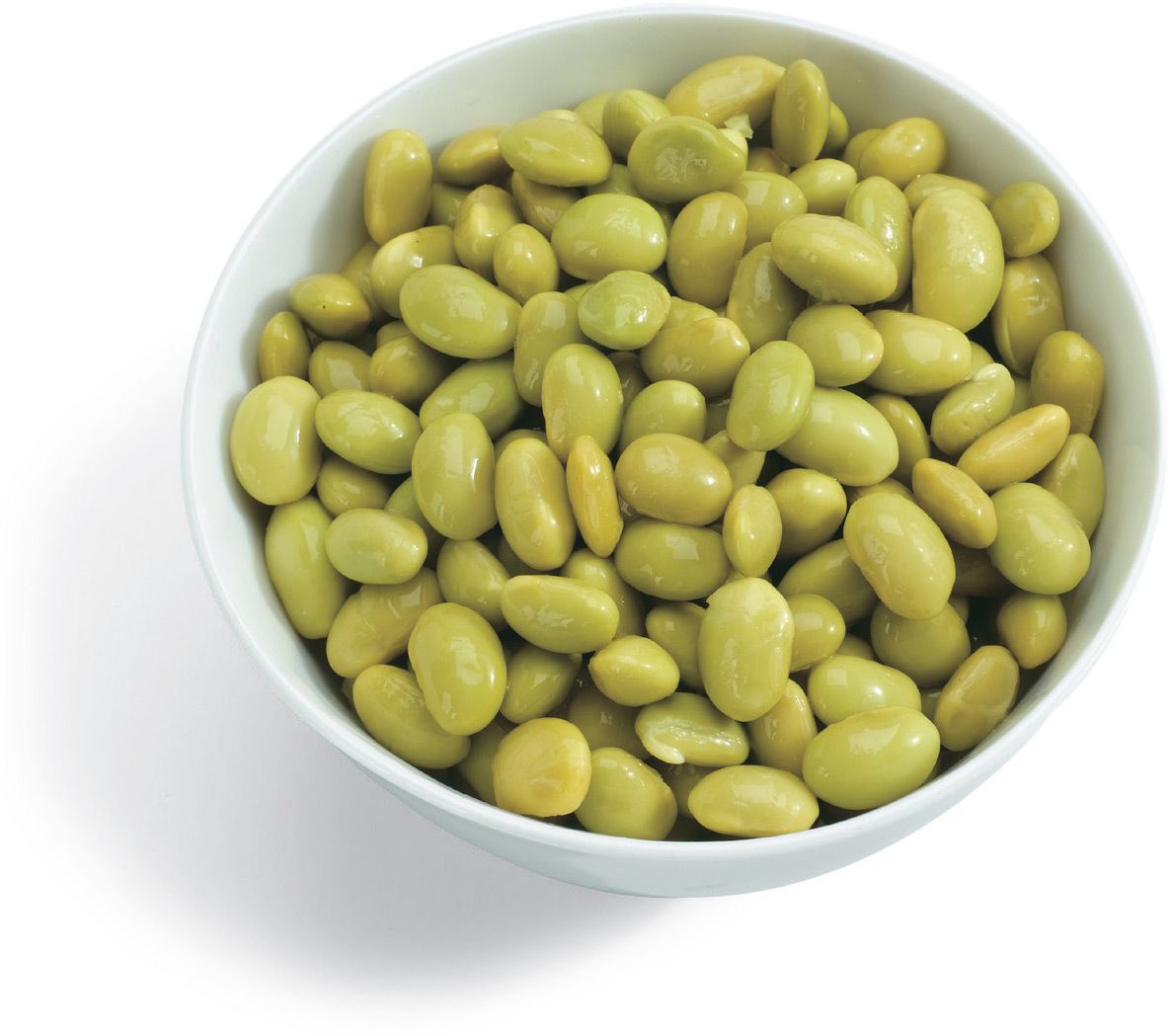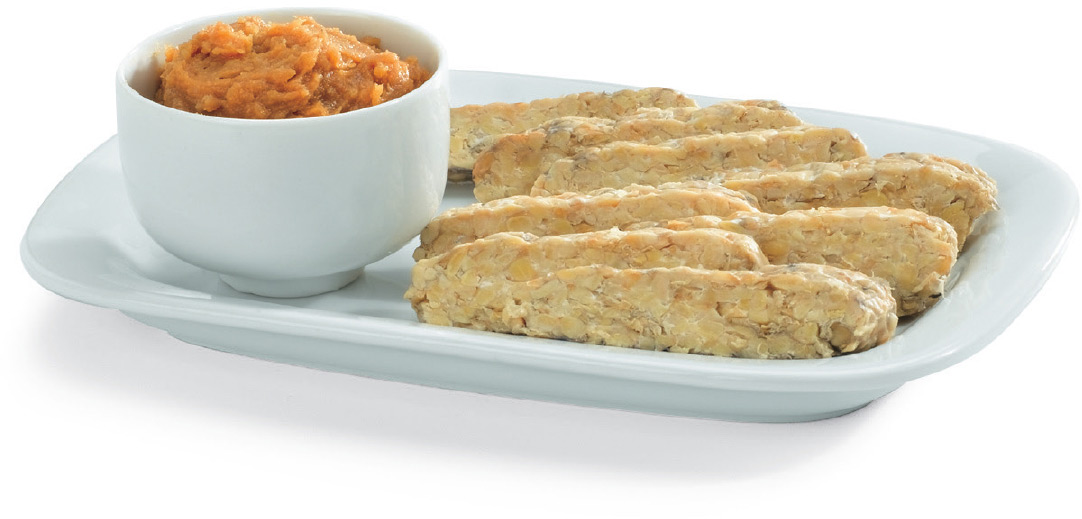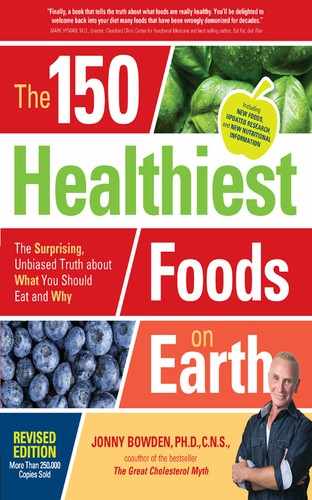
What about soy?
“Wait a minute,” I can almost hear you saying. “In a book on the world’s healthiest foods, you barely mention soy. What gives? Is there a misprint?” No misprint, and full disclosure: I’m not a big fan of soy.
There was a huge controversy in the nutrition community over soy when I first wrote this book, and it’s still going on. The pro-soy PR effort has been so strong that many people simply take for granted that anything with soy in it is a health food. You hardly hear about the many scientists, nutritionists, and researchers who have grave doubts about soy for a variety of reasons.
Meanwhile, for their part, the anti-soy contingent can be a bit strident and angry and sometimes tends to overstate the negatives associated with soy. That said, I think the reputation of soy as a health food is pretty overblown.
The Bad News about Soy
Soy contains large amounts of natural toxins or antinutrients, chief among them potent enzyme inhibitors that block the action of enzymes needed for protein digestion. (Of course, these same protease inhibitors are believed by some to have a cancer-protective effect, hence part of the controversy.)
Soybeans also contain haemagglutinin, a clot-promoting substance that causes red blood cells to clump together. They also contain goitrogens—substances that suppress thyroid function. And soy has one of the highest phytate levels of any grain or legume studied. (Phytates block the absorption of minerals; fermentation reduces them.)
Soy is often touted for its phytoestrogens, but whether that’s a good thing or a not-so-good thing depends on many factors—such as sex and age, for example. As long ago as 2005, the Israeli Health Ministry issued a health advisory that strongly recommended that the consumption of soy foods be limited for young children and adults and that soy formula be avoided altogether by infants. And an article on soy protein infant formula in the Journal of Pediatrics, Gastroenterology and Nutrition suggested that soy protein formula had no nutritional advantage over cows’ milk protein and that the “high concentrations of phytate, aluminum and phytoestrogens (isoflavones)… might have untoward effects.”
FDA Reconsidering Its Position on Soy
The universal acceptance of all things soy may be showing signs of cracking, even among the establishment organizations. As of April 2006, the American Heart Association’s (AHA) Nutrition Committee no longer recommended eating soy to lower cholesterol. In fact, the long-held belief that cholesterol is of prime importance in heart disease is beginning to show signs of weakening. Most of soy’s health claims were based on its supposed ability to lower cholesterol. As more sophisticated ways of measuring heart disease risk come to be used, cholesterol is fading in importance, making the case for soy even weaker.
Even as the first edition of this book went to press, the FDA was reviewing its policy on soy health claims, and that review is still going on to this day. On June 30, 2016, the FDA stated on its website that it was “completing its evaluation of the totality of the current scientific evidence regarding the relationship between soy protein and coronary heart disease.” But the disenchantment with soy has been going on for a long time, at least among health professionals. A decade ago, an article appeared in the Harvard Women’s Health Watch with the title “Soy: Not So Miraculous?” Almost a decade later, in 2014, the Weston A. Price Foundation filed a lawsuit against the FDA, challenging the it on allowing health claims to be made about soy protein’s effect on coronary heart disease. (That case is not expected to be heard until after this book was published.)
The soy associated with the Asian diet is a whole different animal from the soy we’ve been sold in America as a health food. Asians typically eat naturally fermented soy foods like tempeh and miso and old-fashioned fermented soy sauce—and they eat way less of it than you might imagine. It’s also far from clear that the health benefits they get from their diet are attributable to eating soy rather than the fish and sea vegetables they consume regularly. In any case, there’s no evidence that the soy they eat over there is exactly the same as the soy we eat over here. Last time I was in China, I didn’t see a lot of soy ice cream, chips, milks, meat substitutes, and other processed foods. What I did see was some edamame served as an appetizer before a meal of fish, vegetables, a small amount of rice, and fruit.
The Real Deal on Soy
Let me be clear: In a world of french fries, fast food, trans fats, and high-fructose corn syrup, I hardly think a few servings of soy protein is the worst thing in the world. We have bigger battles to fight in the food arena. But I also don’t think soy products are among the healthiest foods on the planet, for all the previous reasons mentioned.
I believe:
1. Fermented soy products such as miso and tempeh—fermented the old-fashioned way, the way they are in Asia—are healthy foods, as are most traditionally fermented foods (e.g., sauerkraut). Fermented foods (including fermented soy products such as tempeh) are great sources of prebiotics and probiotics.
2. One serving of a high-quality soy protein powder a day is not going to kill you, and it may even be good for some people.
3. Most soy products—e.g., soy chips, soy milk, soy ice cream, tofu ice cream, soy burgers, soy cheese, soy lattes, and all the rest—are junk food and no healthier than the foods they replace.
4. I would not feed soy formula to infants and small children unless there were absolutely no other choice, and there usually is.
5. I would not make soy my only source of protein under any circumstances. (Vegetarians take note.)
6. I do not recommend supplements of soy isoflavones. Period.
You don’t have to look very hard to find pro-soy info but you might have to dig a little to get to hear the other side. I suggest that anyone interested in the soy controversy start by Googling “Mary Enig” and reading her extensive writing on soy, including “The Ploy of Soy” and “Soy Alert: Tragedy and Hype.” For a more easy and entertaining—but no less scientifically documented—read the essential book, The Whole Soy Story: The Dark Side of America’s Health Food, by Kaayla Daniel, Ph.D. (Daniel was a doctoral student under Enig.)
By the way, it’s interesting that of all the experts I surveyed for their top ten favorite health foods in this book and in the original edition, not a single one chose soy. Just saying.
Edamame (green soybeans)

As you might have guessed by a cursory glance through this book, I’m not a huge fan of soy (to read why so few soy foods are included in this book, see here). One soy food I do like well enough to include it in the top 150 foods is edamame.
Edamame is the Japanese word for green vegetable soybeans. In Asia, they’re finger food—the Japanese eat them as a snack with beer, much as Americans eat peanuts. And as snack foods go, they’re great. They’re young, they’re sweet, and they’re not very “beany” or bitter. They also have lower amounts of the compounds in soybeans that I’m not crazy about—protease inhibitors, trypsin inhibitors, and phytates.
And they’re not terribly processed. Typically, edamame are boiled or steamed in the pod for 20 minutes, then chilled and salted. They are served at sushi restaurants as an appetizer, or they’re quick frozen and packaged and shipped to your grocer. When the first edition of this book came out, there were only a couple of special stores like Trader Joe’s that carried frozen edamame, but not anymore. You can find edamame in groceries across the country.
Edamame Makes a Healthy Snack Alternative
If you’re comparing edamame to one of the cancer-fighting Brassica such as cabbage or broccoli, or to one of the fiber heavyweights like raspberries or lentils, it’s not going to look like a nutritional superstar. But no one builds a meal around edamame. What it really is is a highly nutritious, high-protein vegetarian snack food. If they were to replace potato chips during football season, you’d probably see a quantum improvement in the health of the average sports fan. About 31/2 ounces (100 g) of the edible portion (the actual beans) provides more than 12 g of protein, 4 g of fiber, 145 mg of calcium, 60 mg of magnesium, 111 mcg of folate, plus just for good measure, a tiny bit of vitamins A and C. It’s also a potassium heavyweight, providing more than 500 mg per 100 g. Granted, not many people consume that much in a sitting, but still.
Research in the Journal of Agriculture and Food Chemistry found that edamame had a fair amount of both soy isoflavones and carotenoids. Cooked edamame have a sweet, nutty flavor and are traditionally eaten as a vegetable in stir-fries in China and Korea. As a snack, the seeds are usually squeezed directly into the mouth with the fingers.
Fermented Soy
(tempeh and miso)

Two soy products I like for their health benefits are tempeh and miso. Tempeh is actually a traditional Indonesian food, made from the controlled fermentation of cooked whole soybeans. It’s usually fermented with a Rhizopus mold (also known as a tempeh starter), which binds the soybeans into a compact white cake. Tempeh fermentation produces natural antibiotic agents that are believed to increase the body’s resistance to infections.
Tempeh May Ease Symptoms of Menopause
Tempeh contains phytochemicals such as isoflavones and saponins. The fermentation leaves the soy isoflavones intact. In research on soy protein, there is some evidence that the isoflavones may be responsible for helping to ease menopause symptoms. Soy protein and isoflavones such as those found in tempeh may possibly reduce the risk of heart disease and some cancers. Tempeh also contains saponins, health-promoting components of vegetables and legumes with strong biological activity, including acting as natural antibiotics. There is some suspicion that saponins may have cancer-protective or cancer-fighting activity. Saponins protect soybeans from predators and insects, but according to research from Keith Singletary, Ph.D., they may also help protect people from colon cancer.
Tempeh has a nutty mushroom flavor, and it can be sliced and sautéed till the surface is golden brown. It can also be used in soups, salads, and sandwiches. Any recipe that works with mushrooms will work with tempeh as well.
Miso
Miso is a soybean paste that has been a mainstay of Japanese cooking since the seventh century. It’s made by mixing cooked soybeans with salt, a grain, and a fermenting agent called koji. There are many varieties of miso; hacho miso is made only from soybeans, and natto miso is made from ginger and soybeans. Most of the others are made from soybeans and a grain.
Despite my reservations about soy in general, there are benefits of some soy protein in the diet, and miso is one way to get soy protein in your diet from a healthy traditional food. A 1/4 cup (64 g) of pure miso contains 8 g of soy protein. It also contains almost 5 mcg of the cancer-fighting mineral selenium, plus 144 mg of potassium, 109 mg of phosphorus, and a small amount of calcium and magnesium. And 1/4 cup (64 g) of miso contains a respectable 3.7 g of fiber to boot. It does, however, contain 2,500 mg of sodium in 1/4 cup. Most Westerners are likely to get miso in the form of miso soup, which also usually contains vegetables, making it a nice, low-calorie, healthy start to a meal.
Natto

Natto is a traditional Japanese food and definitely an acquired taste. It’s made from soybeans fermented by the Bacillus natto, which result in a soybean that’s sticky and can be rather… well, strong smelling. That’s one reason it’s not exactly an American favorite. Nonetheless, natto—also known as “vegetable cheese”—has been consumed safely for thousands of years.
Its claim to fame is its richness in an enzyme called nattokinase. Nattokinase is a fibrinolytic enzyme that can help reduce and prevent clots. My coauthor on The Great Cholesterol Myth—cardiologist Stephen Sinatra, M.D.,—is a great fan of nattokinase for just that reason, and he has written about the value of nattokinase supplements for lowering blood pressure naturally.
Here’s how it works: The body produces a number of substances that assist in blood clotting, one of which is called fibrin. Fibrin is like a web of sticky fibers that your body produces to form a structure that stops excess bleeding. You need fibrin for healthy blood thickness, but too much can impede blood flow and elevate blood pressure. One enzyme in the body, plasmin, dissolves and breaks down fibrin, but plasmin declines with age. Nattokinase, the enzyme in natto, is very structurally similar to plasmin and can directly break down fibrin, helping to prevent clots and keep blood flowing smoothly. That’s why natto is such a “circulation-friendly” food.
Study Shows That Natto Contributes to Healthy Blood Flow
Nattokinase has been the subject of a number of studies, including two human trials. In one of them, twelve healthy Japanese volunteers were given 200 g of natto before breakfast. The amount of time it took to dissolve a blood clot dropped by 48 percent, and their ability to dissolve clots remained for 2 to 8 hours.
Some highly regarded vitamin companies began marketing nattokinase as a supplement, and some cutting-edge nutritionists recommend it as an alternative to blood-thinning medications and to help guard against strokes. (Note: Don’t try this at home, folks. If you’re going to wean off a medication, do it under the supervision of your licensed health professional.)
Nattokinase does help keep clotting factors in a nice, healthy range, but note that the actual food, natto, also contains vitamin K. Vitamin K is great for healthy bones, but it can interfere with Coumadin and other blood-clotting medications. This is no problem if you’re eating natto for its circulatory benefits, but it is a potential problem if you’re on meds. Some vitamin companies remove the vitamin K from their nattokinase supplements.
Natto Works Wonders for the Skin
I’m including natto in the list of the world’s healthiest foods because it really is—but there’s not much danger that too many people are going to start eating it. Most people hate the softness of the fermented soybeans, not to mention the stickiness and the smell. Even many Japanese don’t like it. But if you can stand it, it not only supports good circulation, but it also makes your skin glow. The very same compound that makes it sticky—polyglutamic acid—also increases the natural moisturizing factor in skin.
THE EXPERTS’ TOP TEN LISTS
Alan Christianson, N.M.D.
Alan Christianson is a naturopathic medical doctor (N.M.D.) specializing in natural endocrinology with a focus on thyroid disorders and adrenal functioning. He trains physicians internationally on thyroid disease, adrenal stress, and hormone replacement and has been featured on numerous media outlets, including Dr. Oz, The Today Show, CNN, The Doctors, Women’s World, and Shape magazine. He’s the New York Times’ bestselling author of The Adrenal Reset Diet, The Complete Idiot’s Guide to Thyroid Disease, and Healing Hashimoto’s—A Savvy Patient’s Guide.
Alan’s one of the most athletic doctors I know—there are videos of him doing some of the most hair-raising mountain biking I’ve ever seen—and his personal story of overcoming significant health challenges is inspiring.
Alan frequently talks about food in terms of its potential to upset hormonal balancing acts. Here are his ten favorite foods and why he likes them.
1. Sardines: Sardines are a great source of clean seafood loaded with EPA and DHA (the two long-chain omega-3 fatty acids found in fish), plus, when you eat them with the edible bones, calcium and magnesium!
2. Potatoes: Potatoes are a reliable source of potassium and resistant starch.
3. Adzuki beans: These are one of the densest food sources of magnesium, and the beans themselves are a kidney tonic.
4. Buckwheat: I like this low-glycemic grain for the citrus bioflavonoids, especially rutin and hesperidin.
5. Beet greens: These greens are high in potassium and are an effective way to get vitamin K.
6. Wild rice: This grain is a good source of fiber, antioxidants, and vitamin B6.
7. Shiitake mushrooms: They deserve their reputation as a tonic for the immune system because they’re loaded with immunotonic polysaccharides.
8. Flax seeds: Besides being full of plant-based omega-3 (ALA), flax seeds have saponins and lectins; flax lignans have been shown to have anti-cancer activity, and the fiber in them has been shown to help lower blood sugar.
9. Broccoli sprouts: They contain cancer-fighting indoles and sulforaphanes.
10. Oysters: These contain selenium, zinc, protein, DHA, and vitamin B12. They have no nervous system, so might be acceptable to some ethical vegans.
